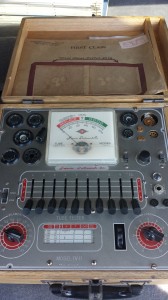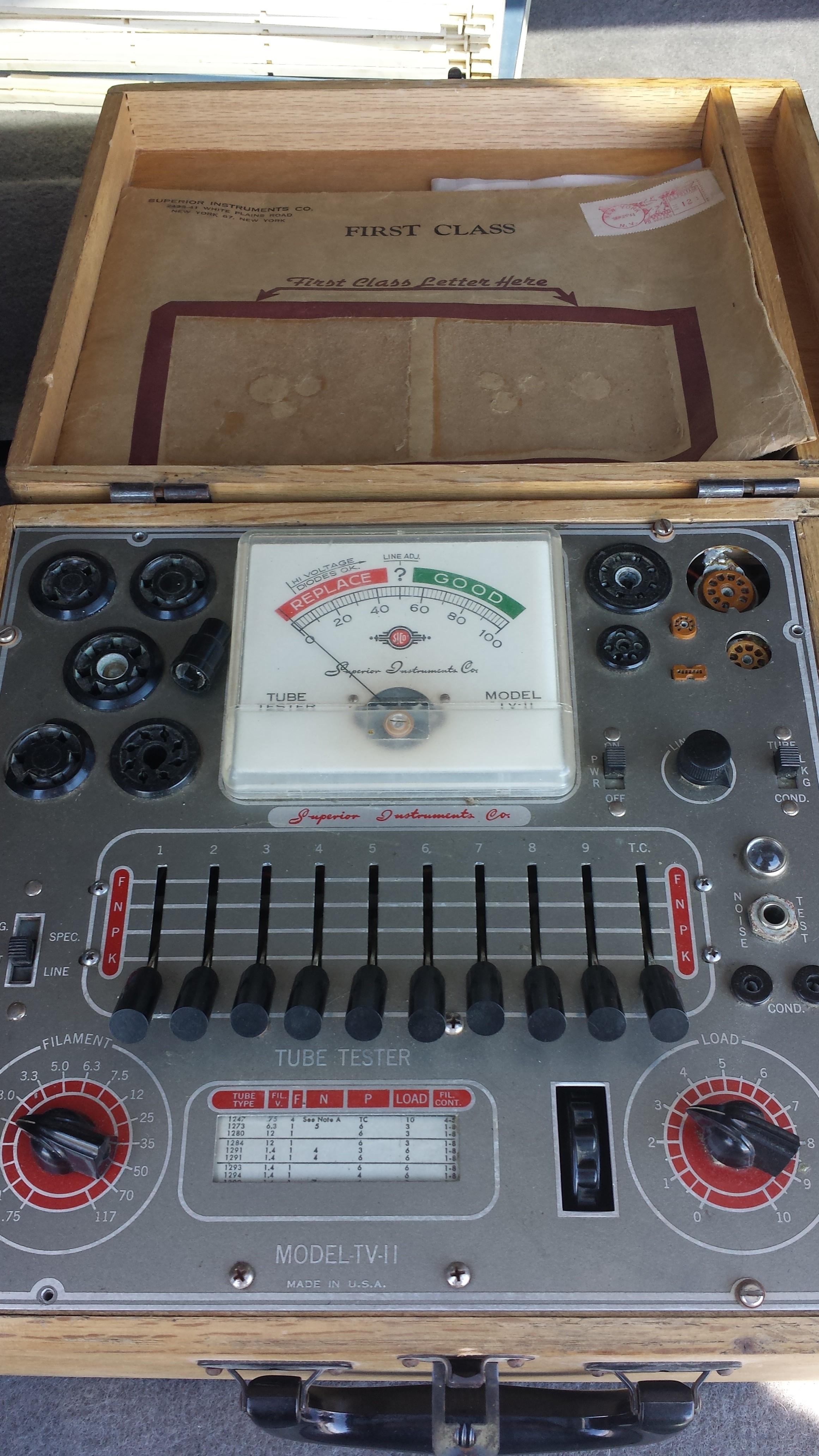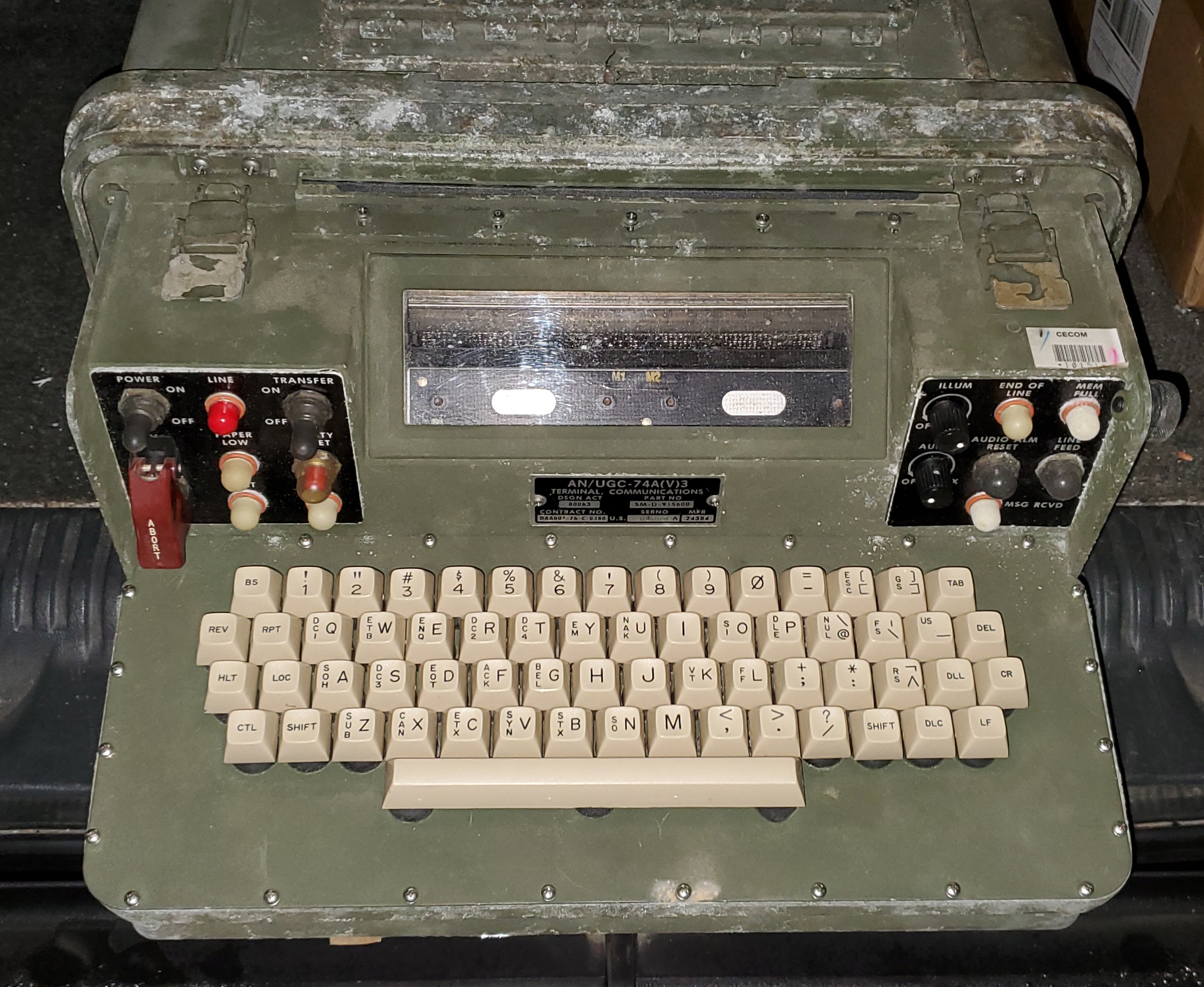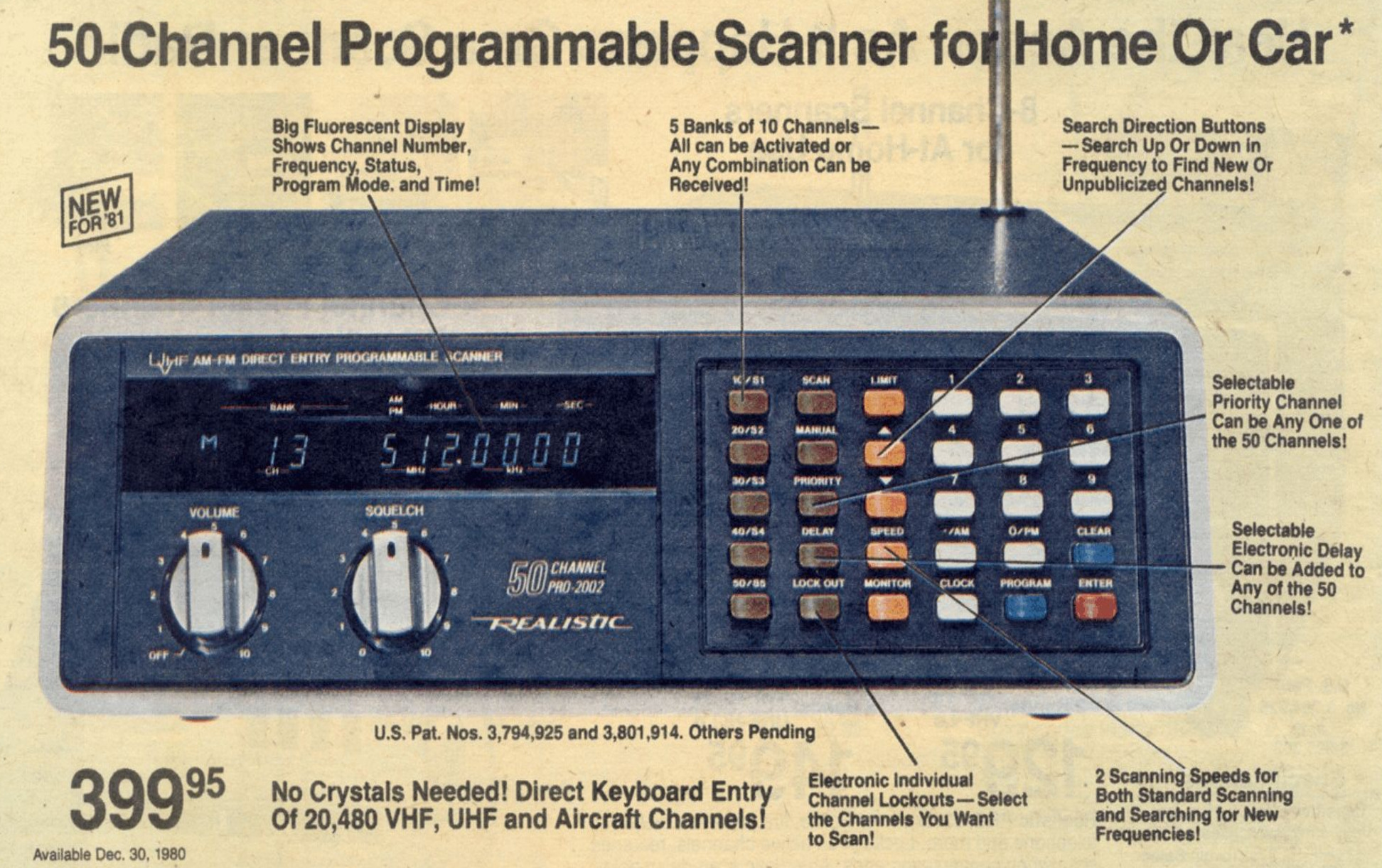OK. I admit it, I’m mixing up the decades a bit… I was referring to the old vacuum tube, thermionic valve, electron tube, or whatever you want to call it, using references from my favorite decade, the 80’s! So, why even bring up “tubes” in the first place? Well, for one, we got “here” from “there”. “There” being the era of vacuum tube technology, and “here” being today’s solid state transistor and integrated circuit technologies.
I was born during the trailing edge of tube technology, but it wasn’t an insignificant part of my life in those days. The primary TV in the house had always been solid state (using transistors instead of tubes) for the most part, but I still remember the days of the large tube testing machines at the local drug and specialty stores. They always fascinated me. In the old days, when your tube based TV or radio had a problem, your DIY solution was to take the tubes out of it and make a trip to the local drug store or even automobile service station. There, you can plug your tubes into one of many available sockets on a tube testing kiosk, having a name like “u-test-m” or something, and find out which one is bad. After which, you can conveniently pick up any replacements you need in hopes of getting your device up and running again. TVs were quite expensive back then. You did not simply throw them out and get a new one. If it had tubes, you went and got the tubes checked!
My first television was tube based. It was a 12″ black & white television set with a black plastic front and white plastic body. I was also younger than 10 years old at the time and felt like a major badass for having my own television! (There I go, mixing my decades again with that self defining vernacular). My TV had the “clicky” VHF channel changer which rotated in a circle and the continuous circular motion UHF channel changer, which was typical of the day for portable TVs. But the one thing it also had were TUBES!
I remember during the first few weeks (or even months) of ownership, I would peer down the case vent slots and watch the tube filaments begin to glow after I turned on the TV set. I’d also hear the high pitched whine the TV set started to make as it was warming up for operation. After a while, you could tell by your sense of smell that it was warmed up and ready to go from the strange combination of heated dust (settling on the tubes) and warm plastics. Of course, by the time it was all warmed up, you could also see and hear that the TV was on.
That memory might not mean a lot to most of the younger generation, but the simple act of turning on a tube TV set in those days affected more senses at once than today’s TVs do. Today, you can see and hear when a TV was on. In those days, you could also feel and smell the heat cast off while it was in operation. It’s a sensation generally reserved these days for that period of time.
Fast forward almost a whole decade. I am regularly attending electronics class in a Vo-Tech high school, I still own the B&W TV, but am using the old family 13″ Sony Trinitron color TV on a daily basis instead. One day, I turn on the B&W TV and it doesn’t work right. I peek inside and see all of the tubes glowing as they should. I had since learned about the many drawers of salvaged consumer vacuum tubes scattered throughout the workbenches of electronics class. So, I brought the TV into school with me. It would be a practical matter of learning and demonstrating how to go about checking and repairing the TV with all of those tubes at my disposal.
A concept I had a hard time of grasping at that time is why there are so many varieties of tubes. Many of them look the same, but can be fundamentally different in operation. Each one has an alphanumeric designator on it like 6L6 or 12AX7, or something. The variety of numbers is extensive. However, that was no immediate concern of mine. All I needed to do is find at least one exact replacement for each TV tube amongst the entire collection of salvaged tubes. The laws of probability concluded that the task was an easy one. I found suitable replacements and eventually discovered and replaced the bad tube. And then, I did what every other teenage geek would do when overwhelmed by the excitement of a successful repair job. I tossed all of the remaining loose tubes back in the tube drawers in a moment of forgetfulness… INCLUDING the bad one! Oh well, I’m sure it will (again) be discovered as bad someday. LOL

That TV was my own specialized personal tube tester for the most part, albeit for a limited subset of tubes. That was in 1983. At that time commercial tube testers were almost all phased out of retail stores. You were left with specialty Radio & TV repair stores to have tubes checked for proper operation. But even those stores were a dying breed.
Today, you’ll be hard pressed to find a tube testing kiosk, even a “vintage” one, which causes problems for collectors of vintage tube based electronics. Instead, you must rely on portable shop units like the one I was fortunate enough to have found at a local flea market. (OK, I admit, my wife found it for me) The one I picked up is a Superior brand model TV-11 tube tester. These are very similar to the ones the “TV Repairman” would carry around when expecting to service tube based TVs back in the day. The electrical design of tube testers is relatively simple, therefore they don’t break beyond repair and can still be readily found at places such as eBay and vintage TV & Radio collector expos. If you find yourself ever wanting to collect many tube based vintage electronic items, you might want to consider picking up your own tube tester someday.




